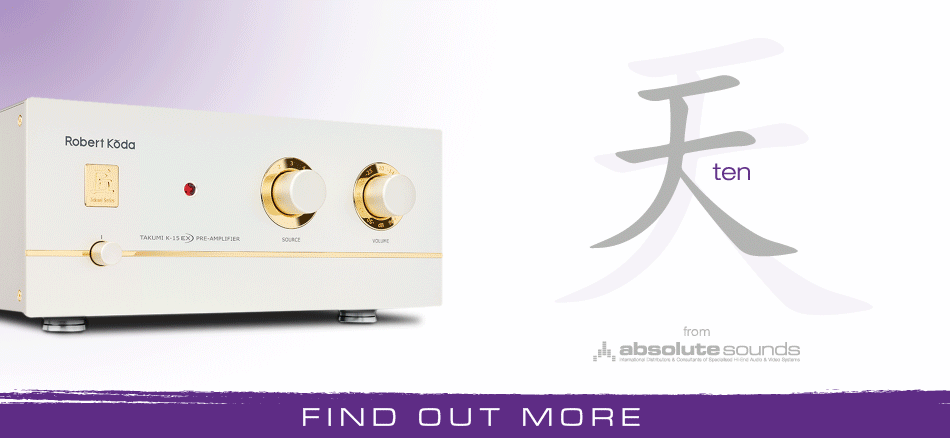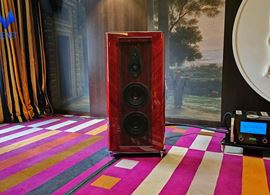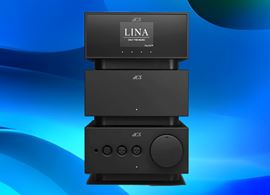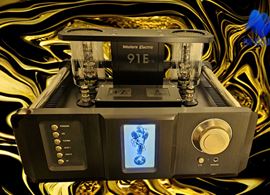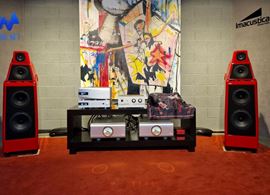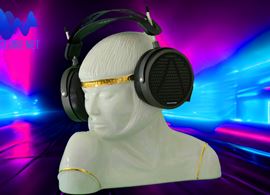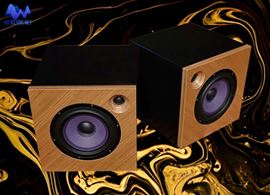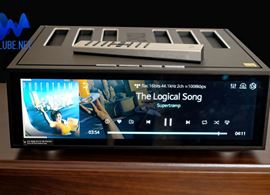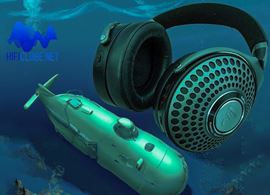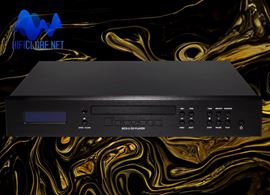Leia análise em Português aqui
The Audiolab Omnia is an accomplished modern pentathlon athlete: horse-riding (Phono MM), fencing (DAC), swimming (Streaming), shooting (50W Class AB Amplifier) and running (CD-player). And it is a strong contender for the gold medal.
In the car industry, they fight to deliver the perfect SUV; in the audio industry, the battle today is for the perfect all-in-one. Each manufacturer tries to present sales arguments to outperform the competition while maintaining the difficult balance between functionality and price.
Most of the brands offer all-in-one amplifiers with DAC and Streamer to boot. Unfortunately, only a few add a CD player to the package.
Let me remind you of the Quad Artera Solus, which, not by coincidence, also belongs to the IAG group and uses the same JVC Olympic hurdle champion transport mechanism mounted on the Audiolab 6000CDT, which will be put through the ordeal of the Pierre Verany Test CD.
Note: The drawer of the Artera Solus is of the car slot type, while the Omnia loading tray sticks its thin tongue out to receive the plastic wafer. Could that be the only difference?
The perfect all-in-one
Is Omnia the perfect all-in-one? It sure is hard to beat at this price, and the quality of the transport mechanism plus the Streamer, the 50 watts AB amplifier and the excellent DAC make it a strong contender for the gold medal. And finally, it offers a huge IPS display, which most of the competition also lacks.
Power to the people
50W might be enough for home use, but a little more power wouldn't hurt.
And I prefer rotary volume knobs - pressure buttons are inaccurate, and these are particularly slow to respond. Of course, you can always adjust the volume with the remote control (also slow to react) or the free DTS Play-Fi App.
And, by the way, a configurable subwoofer output would also come in handy. But it has Pre-Out, and you can adjust the cut off frequency and phase on the subwoofer anyway.
Note: The Mode function allows you to use the Omnia as an Integrated, Preamplifier or Pre+Power for AV and other applications.

The Omnia wears silver for the wedding. The black version attracts dust and fingerprints. Go for silver instead.
Wedding party
The Omnia was born from the happy marriage of the Audiolab 6000A Play with the 6000CDT CD-player.
The dowry was a state-of-the-art ESS Sabre 32 Reference ES9038Q2M DAC, with USB A and B (to connect to the PC), whose best mark is still the current Olympic record: PCM768, DSD512 plus MQA full decoding and Roon compatibility.
To attend the wedding, you must pay one euro short of €1,800. But you are all invited to the party for free; go to your local dealer, and listen to Omnia.
Track Test
I started by subjecting the Omnia to the Pièrre Verany test. Like the Quad Artera Solus CD drive mechanism, the Omnia's transport passed all speed tests and dropouts up to 4mm with flying colours, when the Red-Book standard is 0.05mm and 0.20mm!
And the only reason it does not match the Solus record is the initial hiccup when it reaches 4mm that is corrected straight away. I think the transport mechanism shares the same software as the Quad Artera Solus but not the hardware.
…Omnia CD player can read a CD with a 4mm hole drilled in it…
This corresponds to reading a disc with a 4mm hole drilled in it! So, if you have a lot of scratched CDs or CDs with holes, the Solus and Omnia are the CD players to buy. Unfortunately, many high-end models do not reach 1.5mm, and at 2.5mm, most are 'stuck in the mud".
This is made possible by the read-ahead digital buffer technology, i.e., the laser scan data is held temporarily in a buffer memory to give the error correction system time to act.
So, it is true when Audiolab claims that the Omnia can read CD in poor condition that other reading mechanisms cannot.
Roon and MQA compatible
It is also true that Omnia is compatible with DSD512, which corresponds to PCM768 and with DXD and MQA 352.8Khz. I can prove it (see photo gallery).

Omnia is compatible with DSD512

Omnia is compatible with MQA full unfolding up to 352,8kHz
Roon compatibility is only partially true. You'll need a computer and a PC USB B connection to manage your music with Roon. Omnia does not access Roon on its own via Ethernet.
DTS Play-fi
With this (free) app, you can directly access fifteen streaming music services, including Spotify, Tidal, Qobuz, Amazon, Deezer, etc. Take your pick.

DTS Play-fi offers 16 music streaming services to choose from.
I've only used Tidal (Master) and Amazon (HD). Although I had both set to high resolution, the DTS Play-Fi did not go beyond 44.1kHz, even with the Omnia connected via Ethernet. Later I found I had to engage Play Fi Critical Listening Mode for hi-res audio up to 24-bit/192kHz. For even higher resolution you need USB B with Roon or media players like JRiver29 or Foobar (free).
Note: First, you have to install the IAG Asio Driver on your PC. You don’t need it if you have a MAC. I don't know how my fellow reviewers could test the Omnia without installing or even mentioning the Asio Driver – do they all have Macs?
The problem is that the Asio Driver is supposed to be offered on a disc (not-supplied) and is not easy to find online. However, I will save you the trouble.
This is the link:
https://www.audiolab.co.uk/wp-content/ uploads/2019/12/IAG_USB_Driver_v2.23.zip
USB A has limitations
The USB A input is limited to WMA, MP3, WAV, and AAC up to 44 or 48kHz. It is not compatible with FLAC or high-resolution files.
It also offers Bluetooth (48kHz) and Wi-Fi connections (it comes with three antennas). With Play-Fi via Wi-Fi I could not get past 44/48kHz resolution (you need to engage Critical Listening), although the sound was most acceptable. My smartphone is an Android (Samsung S22 Ultra), so I can't guarantee how it works with iPhones. And yes, I also updated the Omnia firmware.
…the Omnia sounds like a happy amplifier…
Happy amplifier
Sound quality is consistent with all sources and particularly good with high-resolution streaming (Note: I did not test the Phono MM input). It sounds like a happy amplifier, or rather, it makes you happy while you listen to it: lively, open, perhaps a little light-footed, if rhythmically gifted. It boasted good dynamics, but it could get edgy when pushed too hard while playing raw quality material.

Two USB inputs, Type A and Type B, for connection to PCs, Macs, smartphones, tablets and digital storage devices. Four S/PDIF digital inputs (two coaxial and two optical) and an Ethernet port for network connectivity. Four stereo RCA analogue inputs are supplied – three line-level, plus one MM phono input for a turntable.
At cruise speed, it delivers a full-scale soundstage and sounds as good as you could hope for in this price range. The Omnia is on par with Naim Atom (also a 50 watter), which costs significantly more.
Top of the world
You must add the Audiolab Omnia to the top of your shortlist, comprising Naim Atom, Cambridge EVO150, Roksan Attessa Streaming Amplifier, Electrocompaniet ECI 80D, Marantz 40n and Quad Artera Solus.
…the Omnia is the most accomplished of them all…
All of them have different virtues and sins. For example, the Naim Atom (unbeatable design), Cambridge EVO 150 (Class D), Roksan Attessa, Electrocompaniet ECI 80D (streaming Bluetooth only) and Marantz 40n lack the CD player;
The Solus lacks the Streamer (Solus Play offers streaming, though), whilst the Omnia could have more power (the same is true of the headphone output if you are a planar-magnetic fan). Still, it is the most accomplished of them all.

Analogue VU meter

Digital VU Meter
And except for the Atom and the EVO150, none of the others has such a magnificent IPS LC colour display that can be transformed into an analogue or digital VU meter if not for an accurate reading, just for fun.
Overall, the Audiolab Omnia gets a strong recommendation from Hificlube.net. But, of course, you should listen and compare before buying. The final decision is yours, not mine.
For further information, contact:
Sarte Audio (Spain)
Portugal
Or visit your local dealer.

